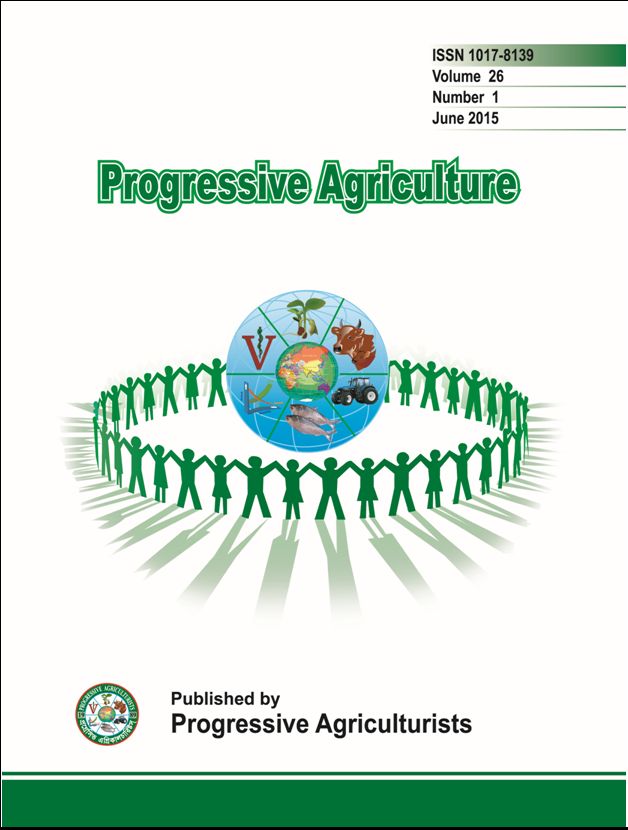Status of buffalo farmers and buffaloes at Subornochar upozila of Noakhali district in Bangladesh
DOI:
https://doi.org/10.3329/pa.v26i1.24519Keywords:
Socio-economic status, buffalo, buffalo farmer, productive and reproductive performanceAbstract
The aim of the study was designed to investigate the socio-economic status of buffalo farmers, productive and reproductive performances and management practices of buffaloes at different villages of Subornochar upozila of Noakhali district in Bangladesh. For this investigation total one hundred buffalo farmers were selected from ten villages. Ten farmers who have at least five buffaloes were randomly selected from each village. The investigation revealed that majority of the buffalo farmers age was ranged from 41 to 50 years followed by 51 to 55 years and less than 40 years. Hundred percent farmers were educated but no farmers were found who completed graduation. More than half of the farmers have primary educated followed by SSC or above and rest of them could sign only. In the study area, sixty eight percent of the buffalo farmers were engaged with agriculture along with buffalo rearing and rests of them were engaged with other business. More than half of the respondents were holding land above ten acres, followed by seven to ten acres and rest of them below three acres. Sixty five percent of the farmers took bank loan and rest of them used own capital and/or NGOs loan for rearing buffaloes. There were no farmers found who got training on buffalo rearing. More than two third of the respondents practiced buffalo rearing as their family profession and rest of them were influenced by the neighboring farmers. The buffalo breed of this area was mostly indigenous types. The highest numbers of buffaloes found were heifer followed by milking buffalo and buffalo bull calves. About half of the farmers kept their buffaloes at least two years followed by three and one years and rest of them was more than three years.The average milk production of indigenous buffalo was 2.7 liter/day. Birth weight, weaning weight, weaning and slaughter age of indigenous buffalo in the selected areas were 27.5 kg, 56.5 kg and 14 and 55 months, respectively. The average age at first heat that was puberty of buffaloes was 3.4 years. The gestation period, number of service per conception, post partum hear period and inter calving period was 10 months, 3.1times, 4.5 and 15.8 months, respectively. Most of the farmers maintain their buffaloes mainly in extensive system and bathan (80%). Majority of the farmers (70%) expressed availability of the feeds and fodder as the major problem for buffalo rearing. Out of locally available feeds and fodders rice straw, pasture grasses and Uri grass were the main source of feeds for buffaloes in selected areas. Uri grasses was very soft, very high in CP content and were commonly available in the bank of river or see shore. Buffalo farmers were not practicing to supply concentrate feeds to their buffaloes. Four major diseases of buffaloes were found where the incidence of foot and mouth diseases was high (63%). Farmers of the selected area were totally unaware about vaccination and de-worming and they did not follow any vaccination and de-warming programme. They sale their buffaloes to the farmers or butcher and average cost of a pair of buffalo was Tk. 80,000.00 to Tk. 180,000.00. The annual cost of production per buffalo was Tk. 6350.00 while a gross return per buffalo was Tk. 13932.00. The annual food purchasing capacity of the buffalo farmers was increased 58%. The educational, social status, health care and housing cost of the buffalo farmers were also increased through buffalo rearing. Considering all this parameters related to livelihood, it was clearly found that the socio-economic status of the buffalo farmers was improved through buffalo rearing.
Progressive Agriculture 26:71-78, 2015
Downloads
260
446

